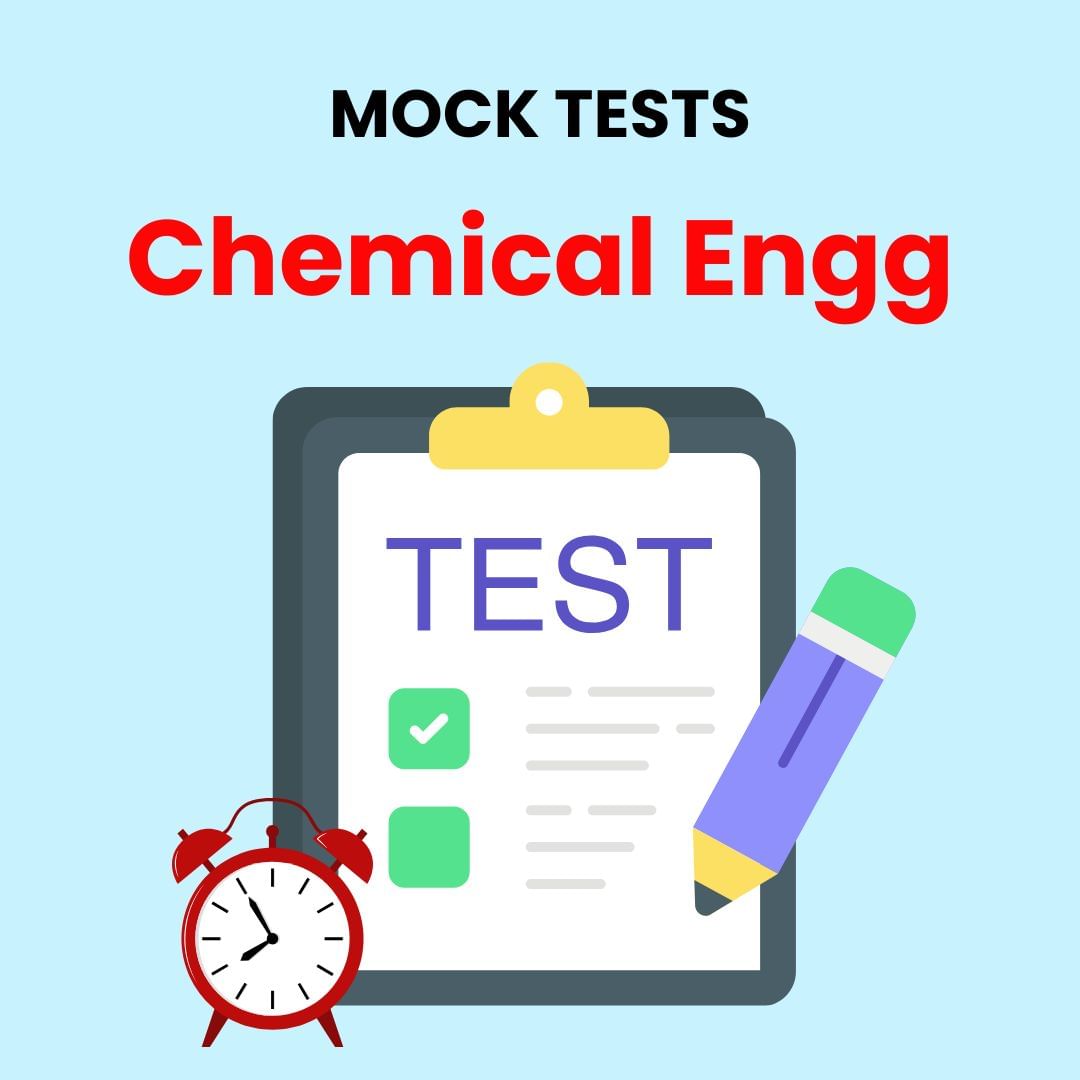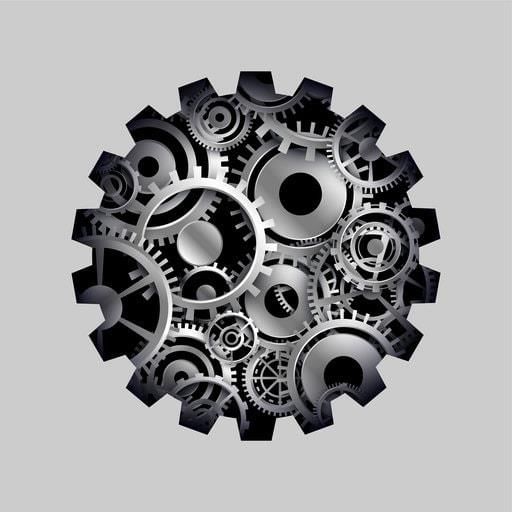Vinyl Chloride from Ethylene | Chemical Technology - Chemical Engineering PDF Download
Introduction
- In this lecture we study the process technology involved in the production of Vinyl Chloride from Ethylene
- Vinyl chloride is produced in a two step process from ethylene
- Ethylene first reacts with Chlorine to produce Ethylene dichloride
- The purified Ethylene dichloride undergoes selective cracking to form vinyl chloride
- We first present the process technology associated to Ethylene Chloride
16.1 Ethylene dichloride
16.1.1 Reactions
- C2H4 + Cl2→C2H4Cl2
- Undesired products: Propylene dichloride and Polychloroethanes
- Reaction occurs in a liquid phase reactor with ethylene dichloride serving as the liquid medium and reactants reacting the liquid phase
- Catalyst is FeCl3 or Ethylene dibromide
16.1.2 Process Technology (Figure 16.1)
Figure 16.1 Flow sheet of production of ethylene dichloride
- C2H4 and Cl2 are mixed and sent to the liquid phase reactor.
- Here, the feed mixture bubbles through the ethylene dichloride product medium
- Reactor operating conditions are 50 oC and 1.5 – 2 atms.
- The reaction is exothermic. Therefore, energy is removed using either cooling jacket or external heat exchanger
- To facilitate better conversion, circulating reactor designs are used.
- FeCl3 traces are also added to serve as catalyst
- The vapour products are cooled to produce two products namely a vapour product and a liquid product. The liquid product is partially recycled back to the reactor to maintain the liquid medium concentration.
- The vapour product is sent to a refrigeration unit for further cooling which will further extract ethylene dichloride to liquid phase and makes the vapour phase bereft of the product.
- The liquid product is crude ethylene dichloride with traces of HCl. Therefore, acid wash is carried out first with dilute NaOH to obtain crude ethylene dichloride. A settling tank is allowed to separate the spent NaOH solution and crude C2H4Cl2 (as well liquid).
- The crude ethylene dichloride eventually enters a distillation column that separates the ethylene dichloride from the other heavy end products.
- The vapour phase stream is sent to a dilute NaOH solution to remove HCl and produce the spent NaOH solution. The off gases consist of H2, CH4, C2H4 and C2H6.
16.1.3Technical questions
1. Provide an insight into the liquid phase guided gas phase reaction?
Ans: The liquid phase acts as a resistance phase for the movement of various gases. The recirculator enables greater turbulence of the liquid phase stream. Thereby, using these mechanisms, the gases are allowed to react with one another and produce ethylene dichloride which gets dissolved in the liquid.
2. Why a water condenser followed by refrigeration is used when the single refrigeration can serve the purpose of cooling?
Ans: This is an important question. Allowing only refrigeration enhances process costs drastically. Therefore, water is used to carry out partial condensation and then refrigeration, even though in principle, water condensation can be bypassed and reactor operation and stream contacting can be further optimized.
3. Why do we need a settling tank after the acid wash unit associated to the crude ethylene dichloride?
Ans: Typically, we observe HCL removal from vapour streams. In such case, the unit used is a scrubber or absorber. The gas/vapour is fed to the absorption column and is obtained as a gas. When a liquid is allowed for scrubbing, it is possible to obtain emulsions of the organic phase in the aqueous phase. Therefore, provide gravity settling mechanism should exist so as to separate the crude ethylene dichloride from the mixture emanating from the acid wash tank.
16.2 Vinyl chloride production
16.2.1 Reaction
- C2H4Cl2→ CH2CHCl + HCl
- Charcoal is used as the catalyst
- The reaction is a reversible gas phase reaction
16.2.2 Process Technology (Figure 16.2)
Figure 16.2 Flow sheet of production of vinyl chloride
- Ethylene dichloride is initially vaporized using a heat exchanger fed with process steam
- Ethylene vapors then enter a dryer that removes traces of water molecules
- After drying, the vapors enter a pyrolysis furnace operated at 4 atm and 500 oC. The furnace is similar to a shell and tube arrangement with the gases entering the tube side and hot flue gas goes past the tubes in the shell side.
- The product vapors eventually enter a quenching tower in which cold ethylene dichloride is used to quench the product gases and cool them.
- The gases from the quench tower then enter a partial condenser which produces HCl as a gas and the liquid stream consisting of vinyl chloride, unreacted ethylene dichloride and polychlorides.
- The liquid stream from the quench tower as well as the condenser is fed to the vinyl still which produces the vinyl chloride product. The product is stabilized using a stabilizer as vinyl chloride is highly reactive without stabilizer.
- The bottom product from the vinyl still is fed to a distillation column which separates the ethylene dichloride from the polychlorides. The ethylene dichloride vapors are recycled back to the cracking furnace and the ethylene dichloride liquid is sent to the quenching tower to serve as the quenching liquid.
16.2.3 Technical questions
1. Why ethylene dichloride is dried before entering the cracking furnace?
Ans: To avoid the formation of other compounds during cracking. Vinyl chloride cracking is a very selective cracking that we wish to happen. The selective cracking needs very clean feed stock.
2. Why quenching is carried out?
Ans: The selective cracking reaction is a reversible reaction. Therefore, by doing cold ethylene dichloride quenching, we are suppressing the backward reaction and ensuring that only vinyl chloride gets formed in good quantities.
3. Can heat integration be carried out in the process?
Ans: IN principle it can be done but in reality no. The reason is that if quenching is not done immediately, then vinyl chloride can get converted back to the ethylene dichloride. Therefore, though there is a hot stream available, heat integration cannot be done due to prevalent process conditions.
4. Can a partial condenser be used in the last distillation column to serve for both quenching, distillation reflux and produce vapour for the ethylene dichloride?
Ans: Yes, this arrangement will be excellent as all requirements in the process will be met by going for a partial condenser. But it all depends on the quenching tower requirements and hence if ethylene dichloride needs to be cooled more than its boiling point, then partial condenser will not serve the purpose.
5. What is the effect of pressure on quenching. This question is interesting as the reaction occurs at 4 atm and quenching occurs at higher pressure?
Ans: Quenching is an operation used for minimizing temperature. As such its not absorption where pressure plays an important role. As such, the effect of pressure will not be significant in the quenching operation.
|
69 videos|121 docs
|
FAQs on Vinyl Chloride from Ethylene - Chemical Technology - Chemical Engineering
| 1. What is vinyl chloride and how is it produced from ethylene? |  |
| 2. What are the main applications of vinyl chloride? |  |
| 3. What are the health and safety concerns associated with vinyl chloride exposure? |  |
| 4. How is vinyl chloride production regulated to ensure safety and environmental protection? |  |
| 5. Are there any alternative methods for producing vinyl chloride? |  |



























